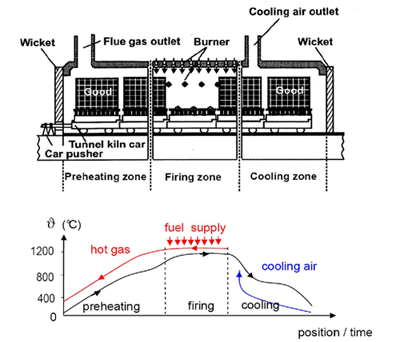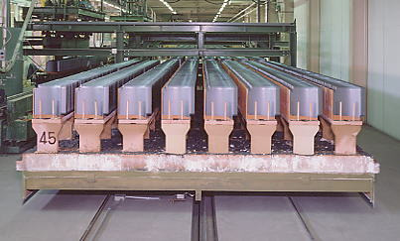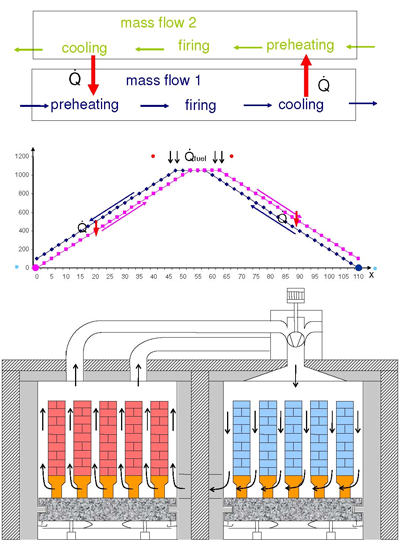Development of a new process for the low-energy production of ceramics
The production of ceramics such as bricks, clinker bricks, stoneware, porcelain, sinks and toilets, etc. still requires a lot of energy, comparatively. Depending on the type of ceramic, various minerals such as quartz (SiO2), alumina (Al2O3), sodium oxide (Na2O), potassium oxide (K2O), etc. are ground and mixed. They are then mixed with up to 50% water by volume in order to be able to shape the mass. The resulting ceramic green bodies are first dried. The dryers required here must be designed in such a way that no cracks occur due to shrinkage during the drying process. The dried green bodies are then heated to temperatures between 800 °C and 1400 °C, so that the individual mineral particles fuse together. This is called sintering. Finally, the solidified product must be cooled.
The sintering process, which is also known as firing, is carried out in tunnel kilns. The green bodies are stacked on carts, as shown in Fig. 1.

Fig. 1: Principle of a tunnel kiln for the production of bricks.
Such carts can be up to 6 m wide and the goods can be stacked up to a height of 3 m. The cart is pushed through the oven. Such ovens can be up to 150 m long, which is why they are called tunnel kilns. The journey of the cart through the kiln can take several days. Figure 2 shows a trolley for roofing shingles.

Fig. 2: Tunnel cart of roofing shingles.
Up to 100 natural gas burners are located in the middle of the kiln. The hot combustion gas flows countercurrent to the carriages in the direction of the furnace inlet. As a result, the ceramic product is heated, as is shown qualitatively in the lower part of the image. The cooled gas exits the kiln into the atmosphere. On the exit side of the carriages, cold air is blown in, which cools the product. The air, which is thereby heated, is sucked off before reaching the burners and is used to dry the green bodies. The sintering of the minerals theoretically requires no energy. Thus, if the energy gained during the cooling of the product were used for heating, no energy would be required for firing. One would only need energy to dry the green bodies. However, this energy is orders of magnitudes lower than the energy currently used for the production of ceramic products.
The institute is therefore developing a new type of kiln with which the energy for cooling can be directly used for heating. As shown in Fig. 3, the carts maneuver through the oven on two pairs of rails. A fan on the roof of the kiln circulates gas between the two segments. The products to be cooled heat the gas, which then heats the products in the other segment. In the combustion zone, the gases are circulated through a few burners, from which combustion gases with high momentum emerge.

Fig. 3: Tunnel kiln principle with solid-solid recuperation
The new kiln concept is being designed with computer calculations. For this purpose, the flow circulation is simulated. The aim of these investigations is to transfer a lot of heat to the blowers with as little electrical energy as possible. The optimal arrangement of the products is being investigated, so that the area required for heat transfer is kept as small as possible. This reduces the volume of the kiln and thus the investment costs. Initial results show that up to 70% of the kiln energy can be saved. The development of such new processes thus contributes significantly to energy and thus carbon dioxide savings. Partial work for this project is carried out by students as bachelor's and master's theses.





